Amazon FBA vs Dropshipping
If you’re selling on Amazon, you’re going to be challenged by a big decision related to how you get your orders to your customers. That choice is between two fulfillment options, and it’s up to you whether you want to utilize Amazon FBA vs dropshipping to fulfill your orders.
Whether you’re planning for the future, just getting started as a business, or you’re considering a change to your existing eCommerce model to maximize your passive income, understanding the fine points, the logistics, and the significant customer services differences between these two models is key.
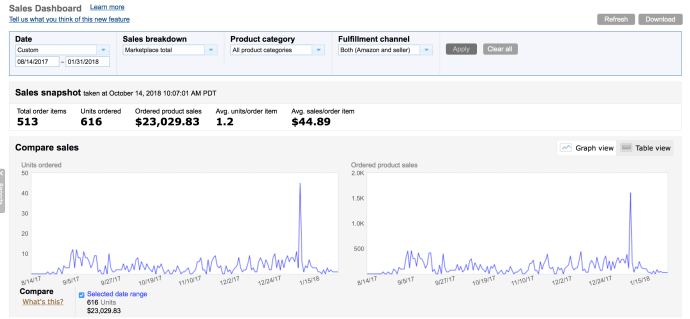
Let’s break down the basics of orders fulfilled by Amazon, dropshipping, how they stack up against each other, potential alternatives, and most importantly, how they can work for you and your business. Keep reading if you want to know the key differences and similarities between Amazon FBA vs dropshipping so you can make an informed decision for fulfilling your orders.
What’s Order Fulfillment?
At its most basic, order fulfillment is the logistical process of completing an order for a customer.
Once a customer’s purchase enters the fulfillment system, it works its way through a sequence, starting with locating the item and picking it up from a shelf in a warehouse or similar facility. Sometimes, that facility is a manufacturer’s headquarters. Other times, it might be a location where products are stored until they have been sold.
Then, the item must be scrutinized for quality control, packed into a shipping box, and shipped to the customer. A solid, complete, and effective fulfillment process not only meets timelines as promised to the customer, but is backed by a robust customer service apparatus to handle customer concerns and complaints.
What is Dropshipping, and How Does it Work?
Dropshipping, in the context of Amazon orders, is using a third party to ship products to your customers. This is an alternative to Amazon’s all-in-one service that fulfills orders and handles most aspects of the customer service process.
Typically, the third-party dropshipping the merchandise is the manufacturer of the product. So, sometimes this is also called direct shipping.
With a dropshipping model, instead of letting Amazon’s warehouses and fulfillment centers run your show, the manufacturer will handle all the work, even though your product is sold by Amazon in your online store.
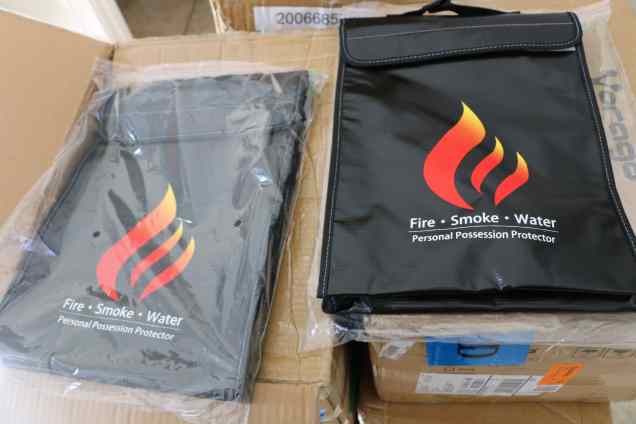
Typically, this model sees Amazon sellers list their products on Amazon, and then when an order is initiated by a customer, the seller has a product shipped either directly from the manufacturer or an independent regional fulfillment facility.
That requires an independent infrastructure to locate the item, pack it, ship it, and deliver it. And all of that must be done within Amazon’s logistics interface and according to their promised timeline. Even though Amazon isn’t leading the fulfillment process, you’re still taking advantage of its popularity with consumers.
How Does Amazon FBA Work?
Amazon has the ability and infrastructure to eliminate the need for a third-party fulfillment program or shipping directly from the manufacturer.
Amazon’s network of fulfillment centers receives products directly from manufacturers and wholesalers, and they store them until orders come in. Then they control each aspect of order fulfillment and customer service, including picking, packing, and shipping.
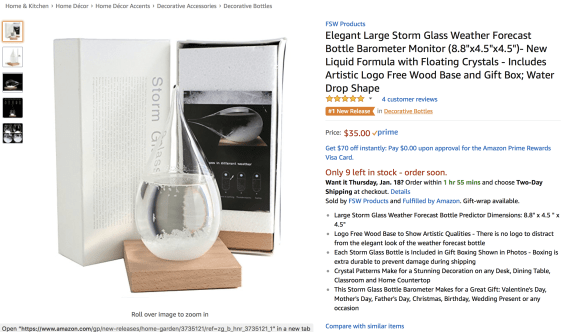
That makes Amazon a one-stop-shop for the whole inventory and fulfillment process. And, as the biggest eCommerce marketplace in the world with almost $100 billion in online sales annually, they represent a huge opportunity for access and potential clicks through to sales that make you money.
So, outsourcing all of your fulfillment work to Amazon has a lot of appeal. They’re clearly doing something that appeals to consumers!
Dropshipping vs FBA
There are pros and cons to consider when comparing Amazon FBA vs dropshipping. You need to be aware of the ins and outs of each to take maximum advantage to the benefit of your company. But, you also need to be mindful of financial costs and the demands your choice will place on your time.
Dropshipping
Dropshipping starts with your decision to add a product to your online store. Then, hopefully, a customer visits, pays for a product, and initiates the shipment of their order. The manufacturer or third-party supplier then packages and drop-ships the order to your customer without Amazon’s help or support.
This method has upsides and downsides. One big benefit is that it doesn’t require you to spend a lot of capital on inventory that will sit in an Amazon fulfillment center. The products come straight from the maker. You don’t need to maintain an inventory, so the initial investment is minimal, and you don’t have your money stuck on a shelf somewhere. You pay for merchandise as each order comes.
Tangentially, it’s also beneficial to use a dropshipping arrangement if you want to minimize your overall financial risk. Since you don’t have to acquire inventory, you’re not exposed to the perils of having products on a shelf that won’t or don’t sell. Becoming saddled with unsellable goods can be ruinous, even if you are currently in the green.
Dropshipping isn’t all roses, though. By offloading the responsibility for the fulfillment, you also lose control of the process. If you end up with delivery issues, poor customer service experiences, and supply complications, your customers might become frustrated and blame you.

That might see your established customer base quickly evaporate. And there’s nothing you can do about it because you don’t hold the reins. All you can do is make excuses.
On top of the risk of losing your prestige and credibility due to things outside of your control, even if you’re successful in selling products through your eCommerce marketplace, you’re still going to struggle to establish a brand identity. That’s because you aren’t establishing your own product line. You’re reselling the products sold by others.
Traditional business models also usually end up with a greater share of each sale’s profit going to you, the business owner. Dropshipping usually costs a bit more, as you’re paying fees to others to outsource the fulfillment of your order.
Pros
- Increased flexibility
- Less capital is needed up front
- Smaller investment to get going
- Less financial risk
- No inventory needed
- Not married to one product line
Cons
- Harder to establish brand identity
- Tighter profit margins
- Less control of processing
- Harder to control customer service
Amazon FBA
If you know anything about Amazon as a consumer, you’ll know that a big part of its appeal is its ease of use. Amazon is also an easy place to start an online business. Though there is a lot of red tape behind the scenes, if you follow their guidelines and stay on the ‘yellow brick road,’ you can be on the way to profit relatively quickly.
To take maximum advantage of Amazon FBA, you’re going to have work within their framework, called Seller Central. That means first setting up an account for selling on Amazon and ticking the box to add FBA service to it. Then you’ll need to integrate your inventory management software with Amazon API, and add your products to the Amazon catalog. You can do that one-by-one or in bulk, depending on scale.
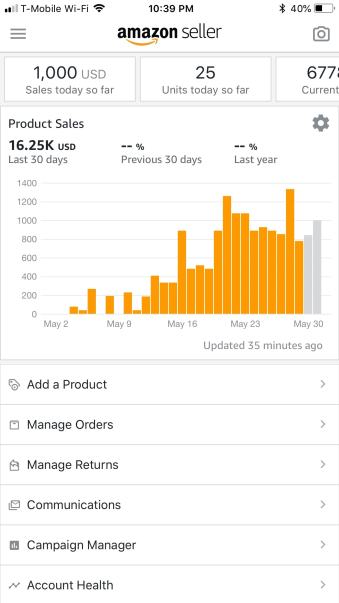
Then, you’ll prepare your products for shipment and deliver them safely and securely to an Amazon fulfillment center, where they’ll be available for customers. Make sure that you comply with Amazon’s packaging requirements as well as their shipping policies. Carefully consider your shipping and procurement costs, as they can compound quickly when your stock sits idly.
Amazon is capable of handling and fully set up for every type of package, from imports arriving from overseas, small parcels, large parcels, and truckload-sized deliveries. But if you don’t read through their guidelines thoroughly, it’s easy to run afoul of Amazon requirements.
For instance, they have special and updated rules for shipping and packing TVs. And when you run afoul of the rules, it will cost you time and resources.
If you’re curious about what it takes to prepare a shipment to Amazon, their checklist offers good insight into how things work, and you can also take courses to learn about the process. Sellers can also convert an existing inventory to the FBA just by clicking a few buttons on their inventory management page on Amazon.
Pros
- Access to Amazon Prime for greater market access
- Variety of services scaled to meet the needs of businesses
- Simplified logistics
- Offload business processing
- Increased exposure can lead to better profit margins
- 24/7 customer service by Amazon
Cons
- Logistics can be complicated
- Shipping to Amazon is tedious and expensive
- Mistakes can be costly
- Not all products work well in the FBA program; Amazon has a lot of rules
- Costs fluctuate, especially during periods of high volume
- Your products ship in Amazon boxes (not your logo)
Does Amazon FBA or Dropshipping Make More Sense?
Have you ever heard of the phrase, “If you can’t beat them, join them?” When deciding between Amazon FBA vs dropshipping, you have to decide if you want your business to compete with Amazon or if you want to take advantage of a partnership with them.
Amazon offers comprehensive services to those who opt into their FBA model. But, in choosing that fulfillment model, you agree to abide by their rules. That leaves you at their mercy. So consider carefully what you’re selling on Amazon and how it fits into your fulfillment planning.
For growing online businesses with an established market share and an eye towards upscaling, FBA is very appealing.
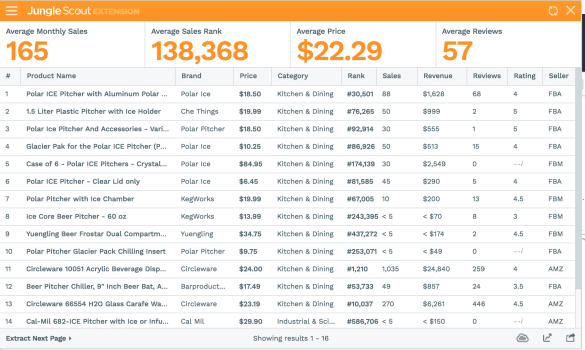
Paying some extra money and operating within the Amazon framework offers an opportunity for better returns on your investment and advertising without increasing the demands on your back office. It also frees you up to spend more of your time managing your company, not with your nose in shipping invoices and manifests.
On the other side of the coin, smaller businesses or those just starting out usually don’t have access to extra capital. So, using dropshipping to get products to your customers directly from merchants or factories is often their preference, as they can do so without creating an inventory or a back-office nightmare. It just takes a little bit more management and follow-up.
FBA and dropshipping each have their appeal. It’s up to you to see which is best for your business. Just make sure that your focus isn’t on yesterday or even today. Think toward your future as well. You don’t want to be caught flat-footed if a growth opportunity presents itself.
Alternatives to Choosing Amazon FBA or Dropshipping
For some businesses, the choice between Amazon fulfillment and dropshipping isn’t easy or clear-cut. When there isn’t an obvious best answer to your questions about fulfillment and how it might affect your business model, there are a couple of alternatives that may work better than choosing one or the other.
Using Both Amazon FBA and Merchant Shipping
For some, there is a substantial appeal in both fulfillment models. Amazon offers the flexibility to choose between FBA and dropshipping per item. You can find more information on their Seller Central page. The setup is relatively straightforward and involves creating a separate SKU for each fulfillment option.
The best part is that since you can take advantage of each fulfillment option, you can make fulfillment work for you. For example, if you’re selling some large items that are difficult to bundle and ship to Amazon, you can elect to send those directly to your consumers from the manufacturer. Smaller items that are both easier to ship and less expensive to hold in your inventory might still be fulfilled by Amazon.
Taking Advantage of Third-Party Logistics (3PL)
When neither FBA nor dropshipping works best for your company, you might consider a hybrid solution, and when that doesn’t work, you might elect to outsource all of your fulfillment needs to a third party, like Helium 10.
There are fulfillment services that can ship orders from Amazon, as well as other eCommerce platforms. Some even still allow you to take advantage of some Amazon services, like Prime. That might be the best of both worlds.
But instead of you and your staff handling all the work, your 3PL service does. For small companies, this is another option that minimizes demands on your back office, albeit for a price.
How Do I Choose Between Amazon FBA vs Dropshipping?
Choosing the right fulfillment option for your business means looking objectively at your eCommerce platform and considering how the fulfillment of your customer’s orders impacts your bottom line and your time, with an eye toward the overall health of your business.
For instance, if you’re a fledgling company without a recognizable brand name, you might want to handle your shipments in-house.
This gives you certain tactical advantages, like shipping your orders in a merchant’s box, instead of an Amazon box to increase your visibility, and it’s often much less expensive. But, the hidden cost of using up your time and energy can become overwhelming if you start upscaling.
When things are going well, and you have lots of merchandise on the move and considerable capital to invest in inventory, it may make more sense to outsource as much of your fulfillment as possible by taking advantage of FBA services. And for those who are someplace in between, there are hybrid solutions available and third-party alternatives to consider.
When you make your choice, consider that your time is money and that for everything you outsource, you also lose a bit of control. The final decision is yours!